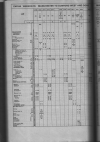Mcr Warrior
Veteran Member
- Joined
- 8 Jan 2009
- Messages
- 14,712
Interesting little anecdote which appears in "Railways in and around Manchester and Stockport (The Modern Era)" (2018) by E.M. Johnson. (Book Law / Foxline).
Mentions an occasion when the diesel hauled loco for the Boat Train to Manchester (from Harwich) failed at Sheffield Victoria and had to be detached.
An electric loco was then substituted for the run over Woodhead, but apparently no-one remembered that the normally diesel-hauled train usually arrived at Piccadilly under the 25kv AC wires.
Chaos apparently then ensued when the train was crossed over at Ardwick Junction away from the Woodhead's 1500v DC system, resulting in the Co-Co's motors burning out.
Did this ever actually happen, and if so when? (Must have been prior to the closure of the Woodhead line in 1981).
Mentions an occasion when the diesel hauled loco for the Boat Train to Manchester (from Harwich) failed at Sheffield Victoria and had to be detached.
An electric loco was then substituted for the run over Woodhead, but apparently no-one remembered that the normally diesel-hauled train usually arrived at Piccadilly under the 25kv AC wires.
Chaos apparently then ensued when the train was crossed over at Ardwick Junction away from the Woodhead's 1500v DC system, resulting in the Co-Co's motors burning out.
Did this ever actually happen, and if so when? (Must have been prior to the closure of the Woodhead line in 1981).
Last edited:



